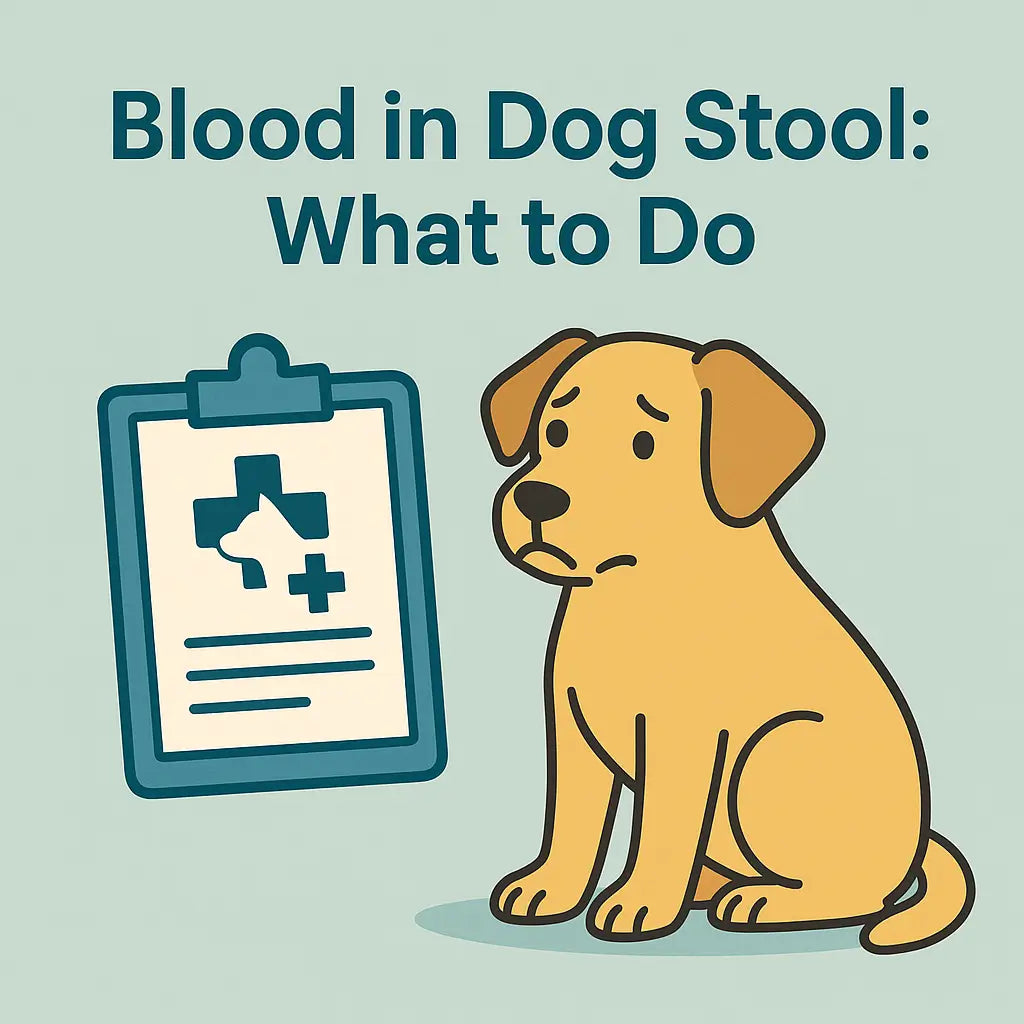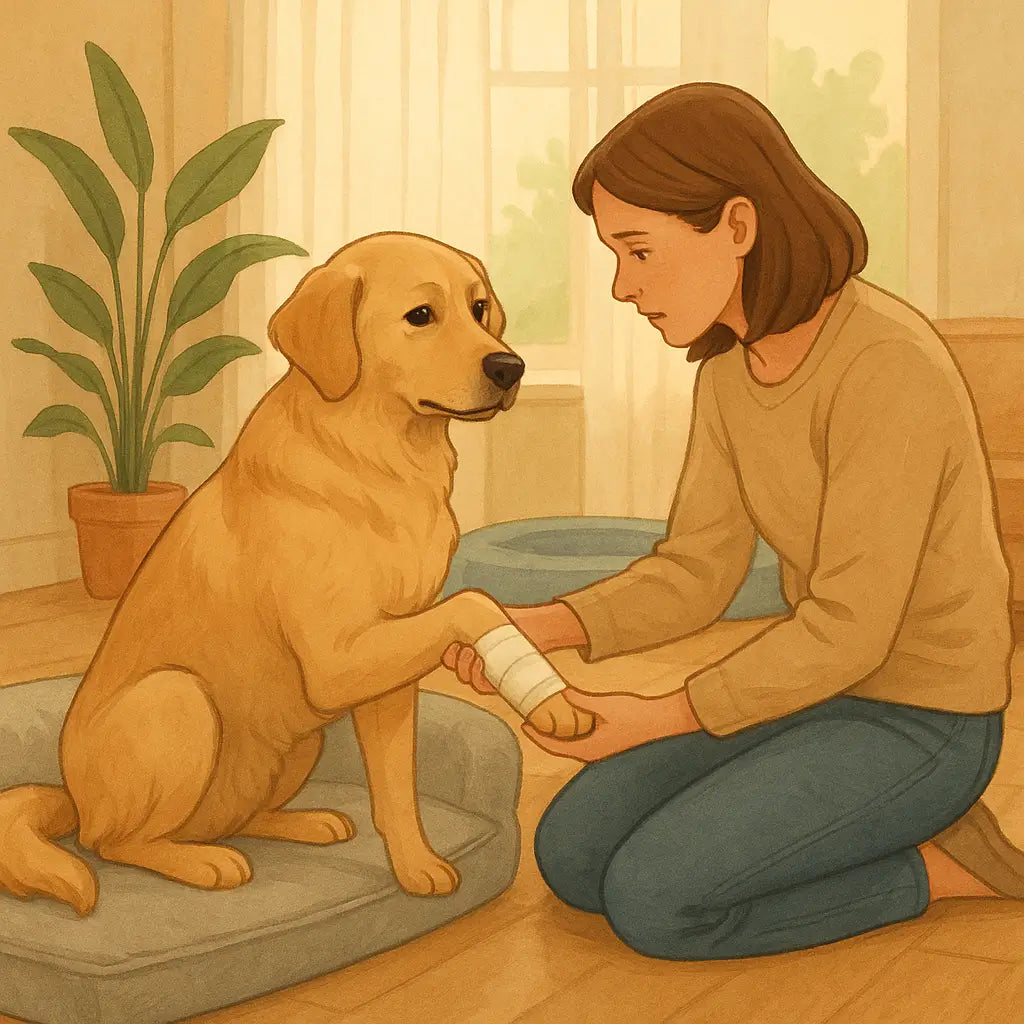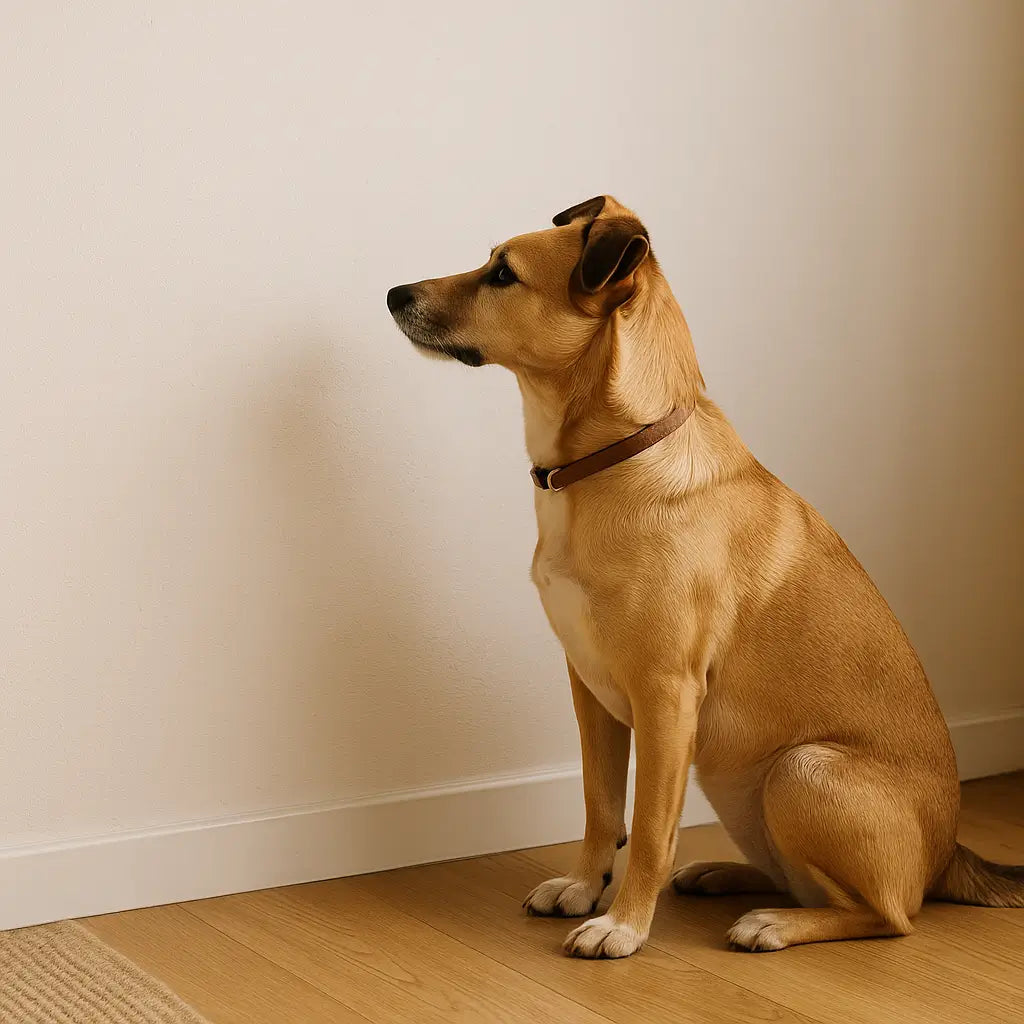Finding bright-red blood or dark, tarry blood in your dog’s stool is scary. Stay calm, note the color and amount, then call your vet. Cornell University advises pet parents to seek help if loose stool lasts more than 48 hours or shows any blood in dog poop – because quick action can prevent dangerous blood loss and shock.
Eight Common Reasons Dogs Pass Blood
Most cases fall into one of eight buckets:
|
Likely Cause |
Quick Clue |
Why It Bleeds |
|---|---|---|
|
Diet goofs / sudden dietary changes |
Ate fatty scraps, chew toy, or bones |
Irritates the pet’s colon |
|
Intestinal parasites |
Soft stool, weight loss |
Worms damage the intestinal microflora |
|
Bacterial infections |
Fever, severe bloody diarrhea |
Toxins inflame intestines |
|
Viral disease (parvo) |
Pup < 6 mo, vomiting |
Destroys gut lining |
|
Food allergies / inflammatory bowel disease |
Off-and-on bloody stool |
Immune system attack |
|
Stress colitis |
Travel, fireworks |
Blood in dog from inflamed intestines |
|
Drug side-effects (NSAIDs, steroids) |
On pain meds |
Tiny stomach ulcers bleed |
|
Foreign body ingestion or tumors |
Toy missing, weight drop |
Physical obstructions cut tissue |
Intestinal parasites are so common that the CDC recommends three separate stool tests to rule them out (see guidance). Meanwhile, the FDA lists gastrointestinal bleeding as a top risk of canine NSAIDs; read its owner sheet here. Knowing the underlying cause helps you and your vet stop the bleeding, not just the mess.
When to See the Vet—Red Flags
Go to the emergency vet right away if you notice:
-
Large clots or pools of fresh blood
-
Black, tarry blood (“melena”) that looks like coffee grounds
-
Severe bloody diarrhea plus vomiting or pale gums
-
Puppy, senior, or dog with known inflammatory bowel disease
-
History of eating bones, toxins, or bacterial infection trauma
-
Weakness, collapse, or rapid blood loss
The AKC notes that tarry blood often signals an upper intestinal tract bleed, while streaks of bright red usually stem from the rectum or colon. Quick care limits the chance of hemorrhagic gastroenteritis, a condition that can kill within hours without fluid therapies and antibiotic therapy. At Colorado’s Hope Animal Hospital, vets report that dogs respond best when pet parents arrive within the first six hours of seeing bloody dog poop.
If an emergency vet is out of reach, call New Hope Animal Hospital or another tele-triage line for guidance while you travel.
First-Aid at Home
While the vet team prepares, you can:
-
Withhold food for 12 hours, then start a bland diet of boiled chicken and rice in small amounts.
-
Offer cool water or an oral electrolyte solution. A 2013 AVMA study showed electrolytes rehydrated 20 dogs with hemorrhagic diarrhea faster than IV fluids – and at lower cost (read study).
-
Keep a fresh stool sample in a sealed bag on ice for lab tests.
-
List any medications, recent food allergies, or toxin exposures in your phone; this speeds routine diagnostic procedures.
Do not give human pain relievers; NSAIDs may worsen bleeding. Do not assume a chew-toy shard will “pass” on its own. Remember, home care buys time; it does not replace immediate veterinary care.
How Vets Pinpoint the Problem
Your vet will start with a hands-on exam and routine diagnostic procedures such as:
-
Fecal O&P to check for intestinal parasites (three samples raise accuracy per CDC).
-
Bloodwork to gauge blood loss, infection, and organ stress.
-
Imaging—X-ray or ultrasound—to spot intestinal blockages or tumors.
-
Endoscopy to view the dog’s stomach and upper gut if they suspect ulcers.
For stubborn cases, tissue biopsies hunt for gastrointestinal disorders like lymphoma or corticosteroid-responsive colitis. Costs run from $50 for a fecal test to $600+ for scopes, but skipping steps risks missed underlying causes and repeat flare-ups.
Modern clinics, such as Hope Animal Hospital, often have same-day lab panels so pet parents leave with an accurate diagnosis and a plan—whether that is antibiotic therapy, dewormers, fluid therapies, or even surgical remedies for severe physical obstructions.
By knowing what to expect, you can advocate for your pet’s condition and help your dog return to a normal diet and happy life faster.
Stopping the Bleed at the Source
Vets match therapy to the underlying cause and your dog’s condition:
|
Goal |
Common Tools |
How They Help |
|---|---|---|
|
Replace fluids |
IV or oral fluid therapies |
Fixes shock, limits blood loss |
|
Fight germs |
Antibiotic therapy for bacterial infections or hemorrhagic gastroenteritis |
Shortens severe bloody diarrhea |
|
Soothe gut |
Gastric protectants for stomach ulcers; bland diet after 12 h |
Lets the digestive tract heal |
|
Calm immunity |
Corticosteroid therapy for inflammatory bowel disease |
Shrinks inflamed intestines |
|
Remove blockages |
Endoscopy or surgical remedies |
Frees the lower or upper intestinal tract |
The Merck Veterinary Manual notes that corticosteroids often bring quick relief for IBD flare-ups (see drug table). An AVMA trial found dogs with hemorrhagic diarrhea rehydrated faster on an oral electrolyte mix than on IV fluids (read study). By pairing data with your dog’s medical history, vets craft proper treatment that gets your pup back to a normal diet.
Prevention & Long-Term Gut Care
Most pet parents can cut future flare-ups with three habits:
-
Parasite patrol. The Companion Animal Parasite Council urges year-round preventives and twice-yearly fecal checks in adults (CAPC guidelines). Killing worms protects the intestinal microflora and stops blood in their stool.
-
Feed smart. Avoid sudden dietary changes that shock the pet’s colon; switch foods over 7 days. Skip fatty scraps that trigger bloody diarrhea.
-
Stress control. Puzzle toys, routine walks, and quiet crates prevent stress colitis—one hidden source of bright red blood.
Check labels, too: the FDA recall list spotlights foods tied to GI upsets (FDA recalls page). These basics keep the immune system stomach calm and the dog’s intestines happy.
DIY Fecal Sample Kit Walk-Through
Can’t reach a clinic fast? Collect a top-quality sample for your vet or a mail-in lab:
-
Slip on gloves; scoop fresh blood or stool into a clean cup.
-
Keep it separate from urine—CDC says mix-ups skew results (CDC stool guide).
-
Chill at 40 °F if you can’t deliver in two hours.
-
For DIY mail-in testing, services like Virtual Vet Care ship prepaid kits that screen for parasites and bacterial infections (at-home kit info).
Send three samples over three days; this boosts parasite pick-up to >90 %. Armed with results, your vet can start accurate diagnosis and skip repeat visits.
FAQs
Why is my dog pooping blood after eating bones?
Sharp splinters scratch the lower digestive tract. See a veterinarian immediately to check for intestinal blockages.
Can food allergies cause bloody dog poop?
Yes. In sensitive dogs, chicken, beef, or grains can spark colitis and bloody stool. An elimination diet plus vet guidance helps.
Is pumpkin good for blood in dog stool?
Plain pumpkin adds fiber that firms mild dog’s diarrhea, but it won’t solve ulcers or foreign body ingestion. Use only after vet approval.
When does tarry poop equal an ER trip?
“Coffee-grounds” color means digested blood from the stomach or esophagus tumors poisoning. That demands an emergency vet visit now.
How long before dogs respond to treatment?
With fluids and meds, many recover in 48-72 h; hemorrhagic gastroenteritis may need three days of hospitalization, per AVMA case reviews.












